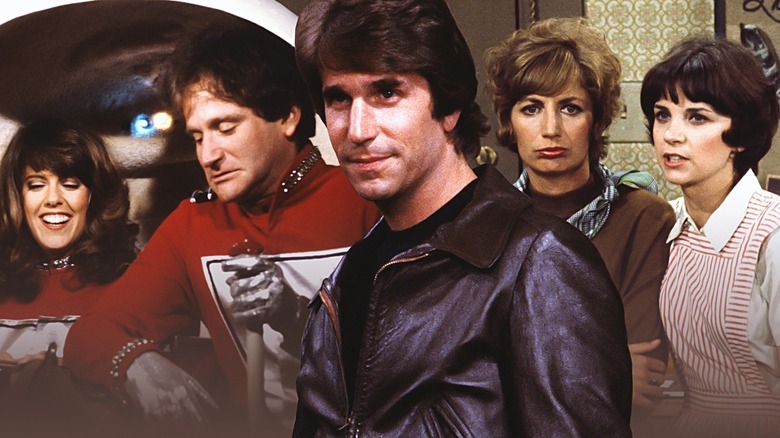
Originally aired beginning in 1974 -- just one year after "American Graffiti" put George Lucas on the map and made the 1950s cool again -- "Happy Days" represents nostalgia at its peak. The popular show revolved around average teen Richie Cunningham (Ron Howard) and his friends during the late 1950s and early 1960s in Milwaukee, Wisconsin. Injecting pure Americana straight into the veins of viewers, "Happy Days" ran for 11 seasons on ABC, becoming one of the most successful shows of the era and one of the greatest
sitcoms of all time. And naturally, any network is going to look at that level of popularity and try to find a way to capitalize on it.
Back in the 1970s, any show that had even a hint of a following could usually be counted on to generate a spinoff or two, so it makes sense that "Happy Days" would churn out over half a dozen. Some of these went on to be genuine successes that could stand on their own two feet outside the context of "Happy Days," while others ... well, let's just say that there's a reason you likely haven't heard of them. Here are each and every "Happy Days" spinoff, from the massive hits to the swiftly cancelled and everything in between.
Read more: The 15 Best TV Shows Of The 1960s
Blansky's Beauties
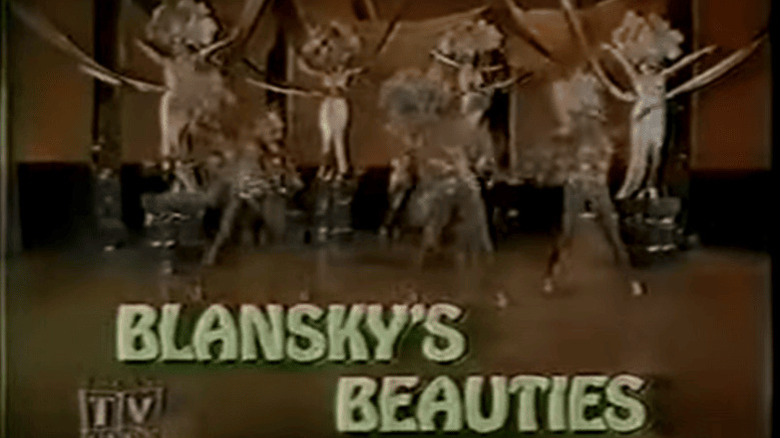
Do you remember that one episode of "Happy Days" where Nancy Blansky, Howard Cunningham's (Tom Bosley) cousin, rolled into town? We don't blame you -- out of the entire extended cast of "Happy Days," she was not exactly the most memorable. And yet sweet Nancy (Nancy Walker) was inexplicably one of the chosen few to receive a spinoff series. Unlike the Midwest-set "Happy Days," Nancy's show "Blansky's Beauties" took place amidst the bright lights of Las Vegas, where she worked as a den mother for a group of showgirls who all shared an apartment. In 1977, you could work on the Strip, but woe betide you if you didn't have an older lady keeping you in line for propriety's sake.
Unsurprisingly, "Blansky's Beauties" didn't last particularly long, as ABC cancelled it after just 13 episodes. The show's biggest contribution to the "Happy Days" shared universe was the fact that it featured among its supporting cast several actors who went on to appear in either "Happy Days" or one of its other spinoffs, including Scott Baio, who took on the role of Chachi after playing a different character here.
Out Of The Blue
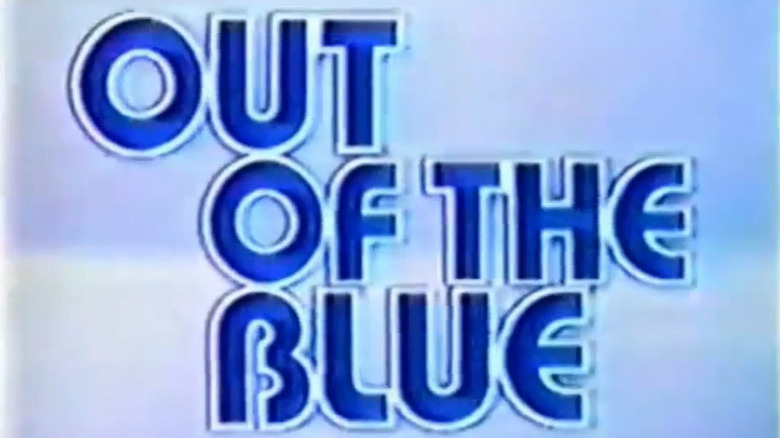
Is "Out of the Blue" a spinoff, or does the lead character's appearance on "Happy Days" a week after "Out of the Blue" premiered make it technically a crossover episode? The age-old question. On the surface, there's very little connective tissue between the two shows. In "Out of the Blue," Jimmy Brogan stars as Ransom, an angel stationed in Chicago to help out a family in need. In a single episode of "Happy Days," he plays the same character, this time attempting to save Chachi from selling his soul in a deal with the devil.
You've heard of backdoor pilots, where network executives will use an established show to introduce a new character who's about to get their own series, as well as testing the waters to gauge audience response? Well, this functions more as an out and out ad for "Out of the Blue." Unfortunately, it didn't help the fledgling show much. It received poor ratings and was cancelled after just seven episodes of its planned 12-episode season, leaving four episodes unaired -- something you really don't do unless you're trying desperately to cut your losses.
Mork & Mindy/Laverne & Shirley/Fonz Hour
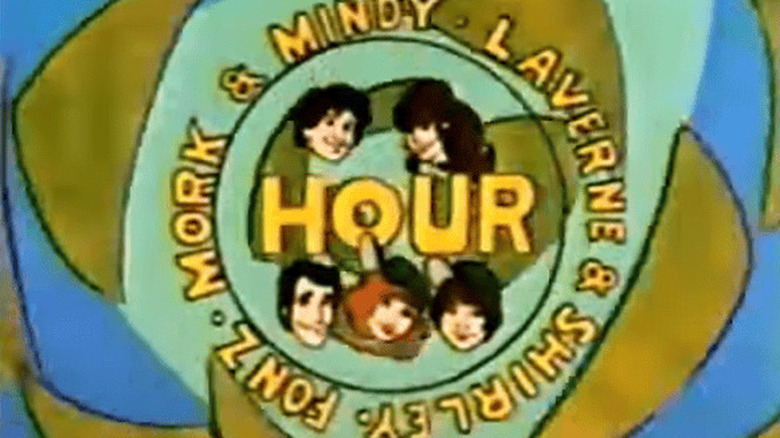
You can tell how lazy this series development was by the mere fact that its title is just a hodgepodge of all the different characters it features. Come on ... at least give it a real name. Basically, what you've got here is a Saturday morning cartoon split into halves, each focused on either Mork and Mindy or Laverne, Shirley and The Fonz. When none of these "Happy Days" properties could sustain a series of their own (there was an animated "Laverne and Shirley In the Army" show that lasted one season before being retooled as a part of this show), ABC chose to combine them all.
The result was a manic but not unenjoyable production with a teenage version of Mork and Mindy (voiced by Robin Williams and Pam Dawber), while Laverne (Penny Marshall), Shirley (voiced by Lynne Marie Stewart, since Cindy Williams had left the live-action series on bad terms), and The Fonz (Henry Winkler) serve their country as mechanics in the Army. It ran for one season in 1982, before disappearing into the ether. Honestly, the most interesting thing about this show is how impressive it was that ABC managed to get so many of its big "Happy Days" stars to reprise their live-action roles.
Joanie Loves Chachi
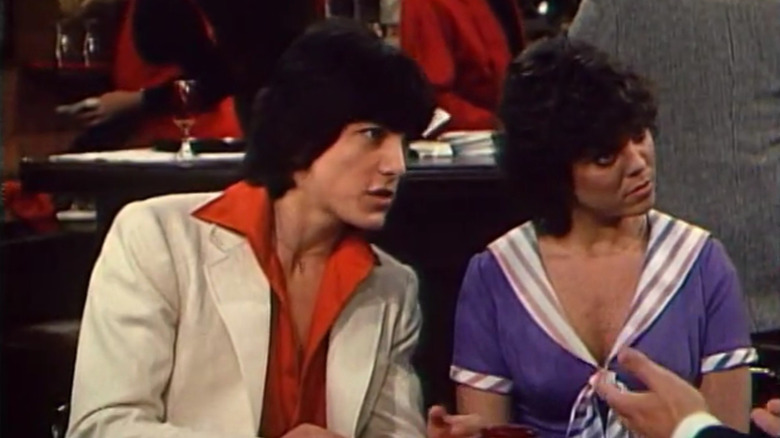
Towards the tail end of "Happy Days," ABC attempted to keep the good times rolling by planting the seeds of a show that would hopefully be the next era in the franchise's history. "Joanie Loves Chachi" featured two of the next generation characters on "Happy Days" -- Joanie (Erin Moran) was the kid sister of "Happy Days" star Richie Cunningham, who essentially grew up on the show, while Chachi (Scott Baio) was brought in during its fifth season as the rogueish younger cousin of the Fonz when the powers that be decided that they needed a teenage greaser, since Henry Winkler was in his 30s by that point.
They were both popular, so the network execs decided to pair them up in a spinoff that would see their adventures as they start a rock band in Chicago. But from the very beginning, it was clear that the plan hadn't been particularly well thought through, and that even its stars weren't entirely on board. Moran said in 1981 interview with CNN that it had taken some convincing to get her to sign on to the production, explaining, "I liked working with the people. But I didn't even want to do it. I wanted to stay on 'Happy Days.'"
"Joanie Loves Chachi" performed poorly from the very beginning, making it clear that the two characters weren't enough to sustain their own show with the beloved ensemble cast of "Happy Days" behind them. It was cancelled during its second season after just 17 episodes. After it went off the air, both Moran and Baio went back to "Happy Days," sticking with the show until it ended in 1984.
The Fonz And The Happy Days Gang
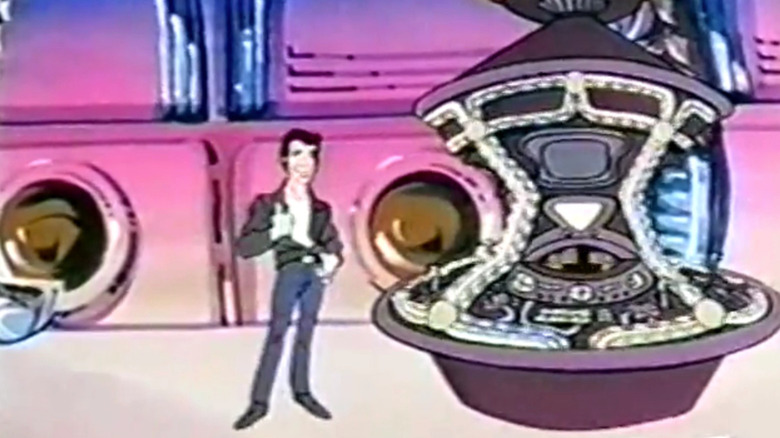
If you're going to make an animated spinoff of a fairly grounded series like "Happy Days," you might as well take advantage of the fact that the new medium allows you to embrace kookier and more outlandish storylines. In "The Fonz and the Happy Days Gang," Fonzie (voiced by Henry Winkler) and his friends end up traveling through time and getting stuck in a different period during each episode. In addition to Winkler, Ron Howard, and Donny Most from the original "Happy Days" series, the show also featured Didi Conn (Frenchie from "Grease") as Cupcake, a futuristic time traveler who has a tendency to get them into more than a few pickles. As you can imagine, hijinks ensue, and in each episode the gang attempt to find their way back to 1950s Milwaukee.
The show was silly but very fun, making it a perfect fit for Saturday morning cartoons, wooing a younger generation of audiences who (with any luck, in the eyes of ABC producers) would grow into "Happy Days." How can you not love a time traveling kid's show with a talking dog named Mr. Cool, voiced by Frank Welker, who also played Scooby Doo back in the day? (It's a trick question -- it's impossible.)
"The Fonz and the Happy Days Gang" lasted for two seasons, after which the Fonz and Mr. Cool shifted over to "Mork & Mindy/Laverne & Shirley/Fonz Hour." In the years after "Happy Days" ended and the animated spinoffs had run their course, there was talk about giving Henry Winkler his own live-action spinoff, capitalizing on the success of the Fonz -- an offer Winkler has always refused, saying, "I love the character of Fonzie, and I'm very proud of him, but if I do him too long, I will get boring and my audiences will get bored. My main responsibility to myself is to grow."
Mork & Mindy
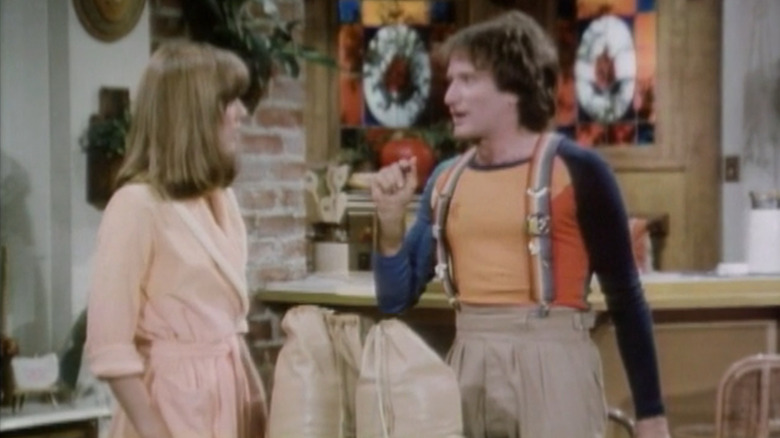
Let's be real, "Mork & Mindy" is a top-tier "Happy Days" spinoff for one reason and one reason only: Robin Williams. The comedian got his big break in the role of the quirky, manic alien (a character that he claimed inspired his dark turn in "Death to Smoochy" decades later) during a 1978 episode of "Happy Days" entitled "My Favorite Orkan." Although the majority of the popular teen show didn't deviate too far from reality, during its later seasons it occasionally experimented with some genre flourishes -- like, for example, when Richie sees a flying saucer and is nearly kidnapped into space by Mork the Ork (Williams) until Fonzie intervenes. It was a tremendously popular episode thanks almost entirely to Williams' improvisational powers (the original script was so bad the first actor cast as Mork, Roger Rees, quit, according to the Robin Williams biography, "Robin" by Dave Itzkoff). So it was a no-brainer on the part of ABC to bring Mork back for his very own show, this time paired up with Pam Dawber as Mindy.
Initially, the "Happy Days" episode ended with Richie waking up and realizing that the entire plot had all been a dream. But when they realized what gold they had with Robin Williams, they retconned that ending, allowing the character to return. The first season of "Mork & Mindy" aired in 1978, beginning with Mork landing on Earth. On paper, he's been sent there to study the humans, but really his bosses were just trying to get him out of their hair -- humor, as we learn, is forbidden on Ork, leaving Mork in a sticky situation.
Over the four seasons that "Mork & Mindy" was on the air, its two title characters share an apartment, learn to adapt to one another, and even develop a romantic relationship. Although ratings steadily declined as the show shifted away from Mork's extraterrestrial antics and focused more on the romance between Mork and Mindy, the show is generally considered to have captured lightning in the bottle, especially during its excellent first season. In 2014, Henry Winkler said in an interview with The Hollywood Reporter that the scripts for "Mork & Mindy" were noticeably shorter than the ones for "Happy Days," recalling that they often contained notes that said simply, "Robin will do something here." What more needs to be said?
Laverne & Shirley
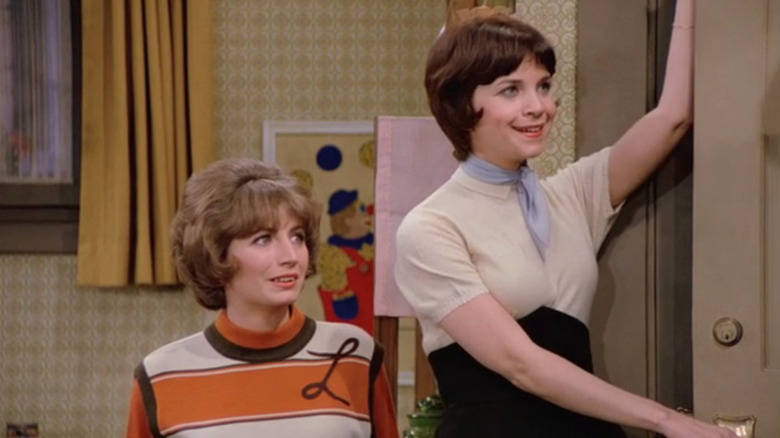
"Laverne & Shirley" was the most successful "Happy Days" spinoff by a country mile, running on ABC for eight seasons and becoming popular in its own right rather than just in relation to the original series it was birthed from. It starred Penny Marshall (the younger sister of Gerry Marshall who went on to become one of the most famous female directors of all time, helming beloved films like "Big" and "A League of Their Own") and Cindy Williams as the titular Laverne and Shirley, two young women who work as bottle-cappers in a 1950s-era Milwaukee factory. The characters were initially introduced in the third season of "Happy Days" as friends of Fonzie, where they appeared in three episodes. They ultimately proved popular enough to launch their own spinoff (something, as you can probably tell by now, the "Happy Days" network executives were always sniffing around for), which began airing in 1976.
Shirley and Williams were a pitch-perfect comedic duo, bringing to life one of the most endearing female friendships on television, with their recurring male counterparts Leonard "Lenny" Kosnowski (Michael McKean) and Andrew "Squiggy" Squiggman (David Lander) expertly matching their energy. Most of the show took place in Wisconsin, but after the fifth season Laverne, Shirley, and their friends relocated to Los Angeles (who could blame them?) when their jobs were replaced by machines.
At the beginning of the eighth season, Williams became pregnant and ultimately ended up suing the network for trying to make her work up to her due date -- she was released from her contract and left the show. "Laverne & Shirley" (which was not rebranded after Williams left) continued for one additional season, and by all accounts might have been renewed for a ninth season, but the network decided that to honor Marshall's request to relocate the production to New York City would be too expensive, so the show was cancelled after 178 episodes in 1983.
If you're looking for the easiest way to keep up with all the major movie and TV news, why not sign up to our free newsletter?
Read the original article on SlashFilm.














